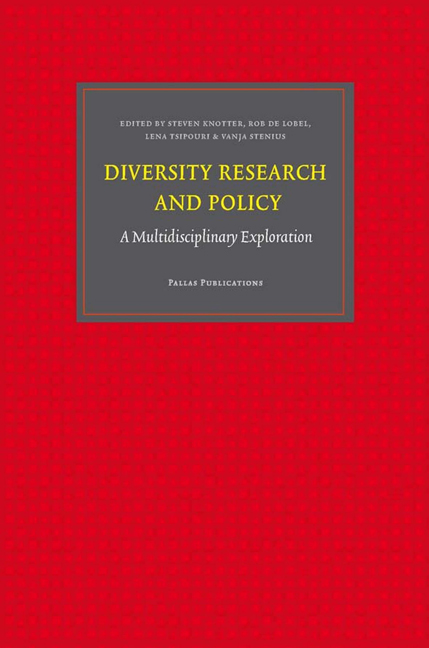Book contents
- Frontmatter
- Contents
- Acknowledgements
- 1 An Introduction
- 2 Diversity and Social Anthropology
- 3 Diversity and Sociology
- 4 Diversity and Criminology
- 5 Diversity and Ecology/Ecological Economics
- 6 Linguistic Diversity
- 7 Diversity and Architecture
- 8 Diversity and Urban Planning
- 9 Diversity and Economics
- 10 Diversity and Diversity Management in Business and Organisation Studies
- 11 Diversity and (Organisational) Psychology
- 12 Diversity and Law
- 13 Diversity and Public Policy
- 14 Conclusion
- About the Authors
- About the Reviewers
7 - Diversity and Architecture
Published online by Cambridge University Press: 15 January 2021
- Frontmatter
- Contents
- Acknowledgements
- 1 An Introduction
- 2 Diversity and Social Anthropology
- 3 Diversity and Sociology
- 4 Diversity and Criminology
- 5 Diversity and Ecology/Ecological Economics
- 6 Linguistic Diversity
- 7 Diversity and Architecture
- 8 Diversity and Urban Planning
- 9 Diversity and Economics
- 10 Diversity and Diversity Management in Business and Organisation Studies
- 11 Diversity and (Organisational) Psychology
- 12 Diversity and Law
- 13 Diversity and Public Policy
- 14 Conclusion
- About the Authors
- About the Reviewers
Summary
A Brief Description of the Discipline of Architecture
Architecture can be defined as the art and tectonics of place making. The discipline of architecture involves a broad set of practices including design of the built environment, development of architectural projects either community-based or oriented towards a (private) client, and advisory work for governments. Architecture also involves a wide spectrum of knowledge including urban design and urban planning, and a variety of architectural ideas, theories and movements. Various dominant ideologies have manifested themselves in built form, whereas other, marginal cultural parameters have emerged in the vernacular or traditional architecture. Architecture is considered the medium through which society is organised and materialised. It resonates with symbolic meaning as well as pragmatic order through built places.
The Meaning and Categorisation of Diversity in Architecture
Architecture is perceived as a cultural product, but the architectural community and discipline have been slow to engage with diversity as a cultural parameter in architecture. Diversity in architecture, particularly the debate of inclusion and exclusion, is not a part of the mainstream discourse. Mainstream architecture is largely dominated by the publicity and discussion of the work of internationally established architects, something that has become more dominant through globalised information technologies. The notion of the ‘starchitect’ has been a rising phenomenon in the architectural world to the extent that nations that are rising in the global economy of late capitalism seek the ‘starchitect’ for the design of significant and large projects. Agents engaged in nation-building have added the dimension of cultural capital to its contemporary agenda of economic strength. One example of this is the ‘Bilbao effect’, named after Frank Gehry's design for the Guggenheim Museum in Bilbao, which engendered a dramatic increase in international tourism to Bilbao. Another example is the major facilities developed for the Olympics in Beijing (China), many of which were commissioned to, and consequently built by the world's most renowned architectural firms.
As stated, cultural diversity is largely marginal in architectural discourse and not often considered an influencing factor in architectural practices. There is not much evidence of currency of terms related to cultural diversity such as identity, ethnicity, culture, multiculturalism, cultural difference.
- Type
- Chapter
- Information
- Diversity Research and PolicyA Multidisciplinary Exploration, pp. 99 - 116Publisher: Amsterdam University PressPrint publication year: 2012



